#cross-platform app development.
Text
Need a well-built app for multiple platforms? Ours react native app development services Expertise in Expert App Devs In India And the USA 2500+ projects completed and 11+ Experience and address all your native or hybrid app requirements. Hire react native developers for modern solutions.

#app development costs#Hire offshore react native developers#react native app development company#cross-platform app development.#Efficient Code Audit#high performance
0 notes
Text
#Custom App Development#Custom App Development Miami#cross-platform applications#ios app development#android app development#miami web development
2 notes
·
View notes
Text
#mobile app development company#app development service#ios app development companies#android app development service#android app development company#ios apps development#cross platform application development#hybrid mobile app development#multiplatform mobile app development
2 notes
·
View notes
Text
UNLOCK SEAMLESS USER EXPERIENCES WITH OUR CROSS-PLATFORM APP DEVELOPMENT SERVICES
In today's digital era, reaching a wide audience across multiple devices and platforms is essential for business success. This is where cross-platform app development plays a vital role. At NextDynamix, we specialize in creating robust, scalable, and high-performing applications and websites. Partner with us to unlock the true potential of your ideas with our exceptional cross-platform app development expertise.
WHY CHOOSE CROSS-PLATFORM APP DEVELOPMENT?
Cross-platform app development offers several advantages for businesses seeking to maximize their app's reach and efficiency:
Reach a Larger Audience: Instantly reach a broader audience, including users of Android and iOS devices, by developing a single codebase deployed across multiple platforms. This broader reach increases visibility, customer engagement, and business growth.
Cost-Effective Solution: Eliminate the need to create separate apps for different platforms, saving development time and costs. Efficiently maintain and update your app, reducing long-term expenses and improving time-to-market with a shared codebase.
Consistent User Experience: Ensure a consistent user experience across different devices and platforms. Deliver high-performance apps that look and feel native to each platform, enhancing user satisfaction and engagement with a shared codebase.
EXCEPTIONAL CROSS-PLATFORM APP DEVELOPMENT SERVICES AT NEXTDYNAMIX
Custom Cross-Platform App Development: Our experienced cross-platform app developers understand your business objectives and target audience, leveraging the power of industry-leading frameworks to create customized cross-platform apps that align perfectly with your brand and vision.
Third-Party Integrations: Enhance the functionality and capabilities of your cross-platform app by seamlessly integrating it with various third-party APIs, payment gateways, social media platforms, and more.
UI/UX Design: Deliver exceptional user experiences with seamless navigation, intuitive interactions, and consistent design elements. Our talented designers create visually appealing and intuitive interfaces that captivate users throughout their journey.
Testing and ensuring quality are our utmost priorities. Our testing experts perform thorough testing across multiple platforms, devices, and usage scenarios, identifying and resolving any issues to deliver a polished and reliable app that meets the highest standards of functionality, usability, and performance.
Performance Optimization: Our cross-platform app developers implement efficient coding practices and conduct thorough testing to ensure your app performs flawlessly across different devices and screen sizes, providing excellent performance and responsiveness.
Post-Launch Support: We provide comprehensive post-launch support, monitoring app performance, addressing user feedback, and releasing updates as needed to ensure your app remains secure, functional, and up to date.
WHY WE ARE THE BEST IN CROSS-PLATFORM APP DEVELOPMENT INDUSTRY?
Expertise and Experience: Our teams of skilled cross-platform app developers have in-depth knowledge and expertise working with various frameworks and technologies, ensuring high-quality and innovative solutions for your app.
Ongoing Support and Maintenance: Ensure the long-term success of your cross-platform app with our comprehensive support and maintenance services, including regular updates, bug fixes, performance monitoring, and user support.
Collaboration and Communication: We work closely with clients, involving them in every stage of the process, valuing their feedback, ideas, and insights, and ensuring the final product reflects their vision and exceeds their expectations.
Seamless Integration with Existing Systems: Our team has expertise in integrating APIs, back-end systems, CRM software, and other third-party services, ensuring a seamless flow of data and optimal functionality.
On-Time Project Delivery: We understand the importance of meeting project deadlines and deliver your cross-platform app within the agreed-upon timeframe without compromising quality.
Data Security and Privacy: Our developers follow industry best practices to implement robust security measures, encryption protocols, and data handling procedures, ensuring compliance with privacy regulations and safeguarding sensitive data.
PARTNER WITH NEXTDYNAMIX FOR EXCEPTIONAL CROSS-PLATFORM APP DEVELOPMENT
NextDynamix is your trusted partner for cross-platform app development. With our expertise, dedication, and commitment to delivering high-quality solutions, we help businesses leverage the power of cross-platform apps to reach a broader audience, drive engagement, and achieve their goals.
Our team will work closely with you to understand your requirements, provide expert guidance, and create a customized solution that sets your app apart in the competitive digital landscape.
2 notes
·
View notes
Text
App Development Reshaped: The Cross-Platform Streaming Revolution

The mobile app landscape is undergoing a dynamic shift, driven by the ever-growing demand for streaming experiences. From entertainment and education to productivity and communication, users are embracing apps that deliver real-time content and seamless accessibility. As a result, mobile app development in Arizona is adapting to this streaming revolution, with cross-platform development taking center stage.
The Rise of Cross-Platform Streaming Apps:
Traditionally, developers faced a major hurdle: building separate apps for iOS and Android, doubling the time and resources required. This is where cross-platform development steps in, allowing developers to create a single codebase that works seamlessly across multiple platforms. This approach offers several advantages for streaming apps:
Faster development and deployment: Developers can reach a wider audience quickly and efficiently, without duplicating efforts for each platform.
Reduced costs: The single codebase reduces development and maintenance expenses, making it a cost-effective solution.
Consistent user experience: Users enjoy a familiar and unified experience across devices, regardless of their operating system.
Simplified updates: Updates are rolled out simultaneously across all platforms, ensuring everyone has the latest features and bug fixes.
Unleashing the Streaming Potential:
The benefits of cross-platform development are particularly impactful for streaming apps. Here’s how:
Real-time content delivery: Cross-platform frameworks enable smooth and efficient data streaming, ideal for live video, audio, and other real-time content.
Offline functionality: Users can access and enjoy content even without an internet connection, thanks to offline caching capabilities.
High-performance: Modern frameworks ensure exceptional performance and minimize buffering, creating a lag-free streaming experience.
Integration with native features: Developers can leverage device-specific features like cameras and microphones, enriching the streaming experience.
Arizona at the Forefront:
Top cross-platform mobile app development in Arizona is thriving, with innovative companies embracing this powerful technology. This translates to several advantages for local businesses looking to build streaming apps:
Access to experienced developers: Arizona boasts a talented pool of developers skilled in cross-platform development frameworks like React Native, Flutter, and Xamarin.
Cost-competitive solutions: Local agencies can offer competitive rates compared to national agencies, while delivering high-quality work.
Collaboration and innovation: Arizona’s vibrant tech scene fosters collaboration and knowledge sharing, leading to cutting-edge solutions tailored to specific needs.
Future-Proofing Your Streaming App:
By choosing best mobile app development services in Arizona with expertise in cross-platform development, you can create a future-proof streaming app that:
Adapts to evolving technologies: The single codebase allows for easy integration of new features and technologies as they emerge.
Scales with your business: Cross-platform apps can seamlessly accommodate user growth and expand into new markets without major redevelopment.
Reduces long-term costs: The efficient development process and simplified maintenance ensure cost-effectiveness throughout the app’s lifecycle.
Embrace the Streaming Revolution:
Don’t let platform limitations hinder your streaming app’s potential. Leverage the power of cross-platform mobile app development in Arizona to deliver an exceptional user experience, reach a wider audience, and stay ahead of the curve. Partner with a top cross-platform mobile app development company in Arizona and unlock the true potential of your streaming vision.
Content Source App Development Reshaped: The Cross-Platform Streaming Revolution
#app development#mobile app development company#mobile app development#mobile app development in Arizona#cross-platform development#best mobile app development services in Arizona
2 notes
·
View notes
Text
10 Reasons to Choose React Native for Cross-Platform App Development

Exploring React Native's role in cross-platform app development, this blog offers an insightful look into its component-based design, native-like performance, and quick prototyping capabilities. It highlights React Native's supportive developer community, a wide array of third-party plugins, and the framework's cost-effectiveness and ease of maintenance. The blog delves into its smooth backend integration and versatility, comparing it with other frameworks like Ionic and Flutter in language, performance, and UI customization. Concluding with practical tips for effective development, it provides a comprehensive overview of React Native’s capabilities.
For more detailed insights, you can read the full blog here.
#react native#react native app development company#cross platform app development#mobile app development#technology#app development#Hire React Native Developers
4 notes
·
View notes
Text
In today’s era of startups and entrepreneurship, many people own their own businesses. They continue to wonder things like, “Why do I need a mobile app? I get a lot of foot traffic, thus I don’t need the app for my business.” In this blog, we’ll talk about why mobile applications are crucial for every kind of business and how they may help it succeed in the marketplace.
To read full post, Visit: https://tech.eastsons.com/blog/why-mobile-applications-are-important-for-your-business
#android application development company#cross-platform mobile app development#ios development company#android and ios development company
3 notes
·
View notes
Text
#Hire Cross Platform Developers#Hire Cross Platform App Developers#Hire Cross Platform Mobile Developers
2 notes
·
View notes
Photo

When you're ready to bring your mobile app idea to life, it's important to choose the right app development company. Here are a few things to keep in mind:
Experience: Look for a company with a proven track record of success in developing mobile apps.
Portfolio: Review the company's portfolio of work to see if their style and quality match your vision for your app.
Communication: Make sure the company is easy to communicate with and responsive to your questions.
Price: Get quotes from several different companies to make sure you're getting a fair price.
https://shorturl.ac/7ah3t
#app development company#app development company usa#android app development#flutter app#iphone app development#web design company#ios app development#cross platform ap development#mobile app development#web app development#native app development#hybrid app development
2 notes
·
View notes
Text
#flutter application development#flutter app development#flutter app developers#cross platform mobile app development company#cross platform development#application development service#web app development#mobile app development service#Flutter app development services#mobile app development#cross platform development service
2 notes
·
View notes
Text

Cross mobile app development lets you create one codebase for multiple platforms. Save time and resources while delivering a seamless mobile experience with cross-platform development.
#cross mobile app development#mobile app development#platforms#app development#hybrid app builder#codebase#multiple platforms#mobile experience#development
2 notes
·
View notes
Text
Simplify Development: Accelerate App Building With a Unified Codebase

Let’s talk about the new reality in app development: unified codebases. This approach isn’t just a trend; it’s a strategic shift that accelerates app building across multiple platforms using a single, cohesive codebase. By focusing on this method, developers are seeing not only faster deployment times but also enhanced consistency and lower maintenance costs.
This streamlined process is reshaping how we think about developing applications, offering a direct route to more efficient and scalable solutions.
In this article, we will take a deep dive into the benefits and methodologies of unified codebases. We will study this up-and-coming trend thoroughly and explore its significance in the tech world.
How Unified Codebase Can Accelerate Time-to-Market?
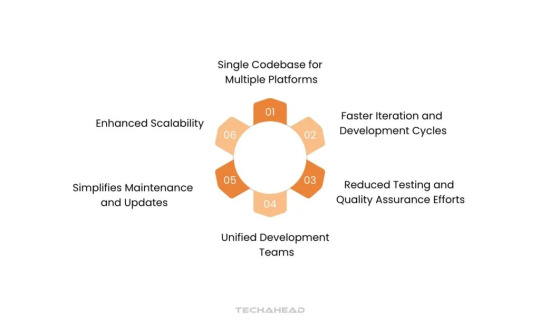
Unified codebase is another form of saying of cross-platform app development. It offers clear advantages which drive faster time-to-market and allow businesses to launch applications more efficiently.
Single Codebase for Multiple Platforms
A significant advantage of the single codebase approach is the ability to create one codebase for multiple platforms. Native apps require separate development for each operating system, extending the project timeline.
However, with cross-platform frameworks, app developers can write code once and deploy it across various platforms, such as iOS, Android, and the web. This approach simplifies development by cutting down duplication, enabling businesses to launch their apps simultaneously across platforms, and shortening the overall development cycle.
Faster Iteration and Development Cycles
A single codebase also accelerates iteration and feature updates. Since developers work with a unified codebase, changes only need to be made once, and they are applied across all platforms. This reduces the time spent on bug fixes and quality assurance.
Additionally, cross-platform frameworks come with pre-built libraries and components, eliminating the need to build features from scratch. These resources simplify development by offering ready-to-use elements like UI components, animations, and system functions, further speeding up the process.
Reduced Testing and Quality Assurance Efforts
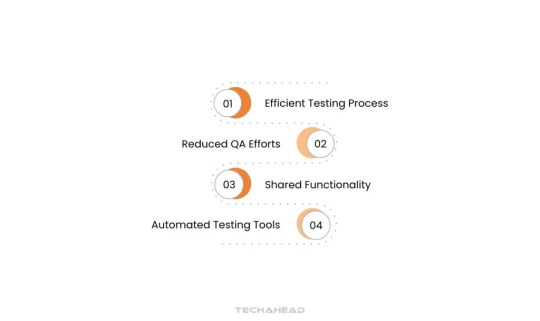
With a single codebase, the testing process becomes more efficient, as repetitive testing for each platform is no longer required. In native app development, QA teams must test each platform individually, consuming time and resources. Cross-platform development allows for shared functionality, which implies development by streamlining testing efforts. Automated testing tools can be used to ensure consistent performance across all platforms, further reducing the time spent on OA.
You can also learn about the exact difference between Flutter and native app development.
Unified Development Teams
Single codebase development eliminates the need for separate iOS and Android teams, simplifying coordination. Native development often requires independent teams, which can lead to coordination challenges and extended timelines. With a single team handling both iOS and Android, project management becomes more cohesive. This simplifies development by reducing communication barriers and ensuring faster, more synchronized development cycles.
Simplifies Maintenance and Updates
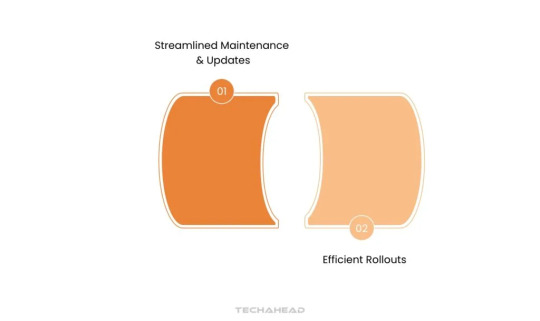
Single codebase development significantly streamlines maintenance and updates. With a unified codebase to manage, bugs, and features updates are resolved faster, reducing downtime between releases. This allows businesses to roll out updates and improvements more efficiently compared to maintaining separate native apps, further helping to simplify development and keep users satisfied with timely enhancements.
Enhanced Scalability
Cross-platform apps provide superior scalability, allowing businesses to target multiple platforms from the outset. Native app development typically requires staggered release, launching on one platform and expanding to others later. A single codebase eliminates this delay, enabling simultaneous deployment across all platforms. This approach not only simplifies development but also wins the initial user base, boosting the app’s success potential by reaching more users faster.
By leveraging a unified codebase, businesses can streamline processes, cut down timelines, and ensure faster time-to-market, all while maintaining high-quality output.
Popular Single Codebase Frameworks

Several single codebase frameworks simplify app creation by offering a unified codebase solution for multiple platforms. Each framework comes with distinct benefits and challenges. Below are some top frameworks, along with their properties, advantages, and potential limitations.
React Native
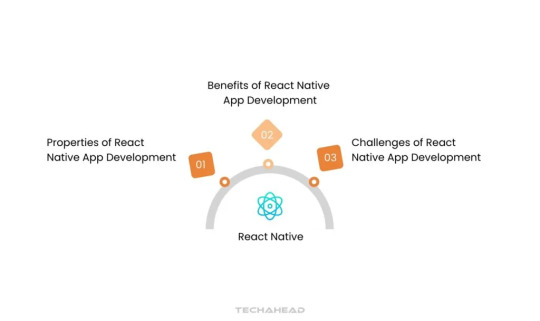
React Native app development, developed by Facebook, has become a top choice for building mobile apps using JavaScript while delivering a native-like experience.
Properties of React Native App Development:
Programming Language: JavaScript
Supporting Platforms: iOS and Android
Ideal Use Case: Apps requiring rapid deployment with reusable components across multiple platforms.
Benefits of React Native App Development:
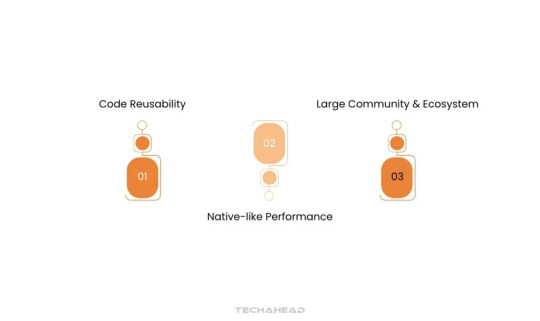
Code Reusability: The ability to write once and run on both iOS and Android significantly reduces development time.
Native-like Performance: React Native bridges the gap between cross-platform convenience and native performance.
Large Community and Ecosystem: React Native boasts extensive community support, making it easier for developers to troubleshoot issues.
Challenges of React Native App Development:
Complex UI Development: While effective for most apps, creating highly complex UIs may require extra native modules.
Performance Lag: In some cases, apps might face performance issues when compared to fully native apps, especially in areas demanding heavy computation.
React Native’s single codebase advantages simplify development while maintaining the feel of a native app, making it an efficient option for businesses aiming for faster launches.
Flutter
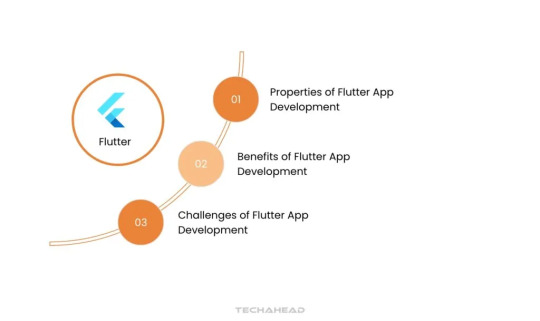
Flutter app development, developed by Google, is a highly versatile UI toolkit used for building natively compiled applications from a single codebase.
Properties of Flutter App Development:
Programming Language: Dart
Supported Platforms: iOS, Android, Web, Desktop
Ideal Use Cases: Apps that require high customizability and advanced UI/UX features, including graphics-rich applications.
Benefits of Flutter App Development:

Hot Reloading: FLutter’s hot reload features accelerate development cycles by enabling real-time updates to the UI without restarting the app.
Rich Set of Widgets: Flutter provides a vast library of customizable widgets, allowing developers to craft highly visually appealing apps.
Express UI Design: Flutter’s customizable widgets support complex UI designs that can deliver smooth animations and transitions.
Challenges of Flutter App Development
Learning Curve: As Dart is the primary programming language for Flutter, developers unfamiliar with it may take time to adapt.
App Size: FLutter apps tend to be larger than those built with other frameworks, which could affect download times or app storage requirements.
Flutter’s single codebase features allow for the creation of highly aesthetic apps, while its performance efficiency caters to a wide range of platforms simultaneously.
Xamarin
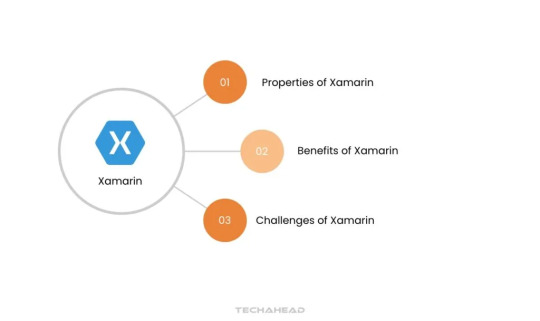
Xamarin, powered by Microsoft, allows developers to build cross-platform apps using C# and .NET frameworks while accessing native APIs.
Properties of Xamarin
Programming Language: C# and .NET
Supported Platforms: iOS, Android, Windows
Ideal Use Case: Enterprise-level applications and companies already integrated with Microsoft technologies.
Benefits of Xamarin

Full Access to Native APIs: Xamarin ensures near-native performance by giving developers direct access to platform-specific APIs.
Integration with Microsoft Ecosystem: Xamarin’s seamless integration with tools like Visual Studio makes it an excellent choice for enterprises using Microsoft’s suite.
Code Sharing: It allows up to 90% of code to be shared between platforms, enhancing development speed and efficiency.
Challenges of Xamarin
App Size and Performance: Xamarin apps can sometimes have larger footprints, potentially leading to increased app size or slight performance lags.
UI Customization: Developers may need to write custom code for platform-specific UI, which can slow down the process compared to fully native frameworks.
With Xamarin, the single codebase concept supports faster development cycles, especially for enterprises seeking near-native performance without compromising on platform reach.
Why Should You Go For A Single Codebase Process?
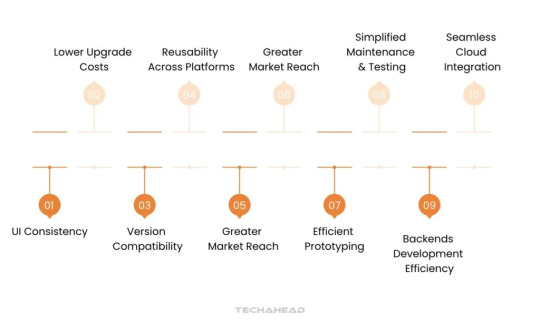
UI Consistency
Using a single codebase allows apps to target multiple platforms, whether Android, iOS, or Windows. This not only reduces development costs but also increases the app’s market penetration by providing users with faster access to your services.
Lower Upgrade Costs
Prototyping is essential in app development to validate ideas and concepts. A single codebase streamlines this process, making it faster and more efficient to create prototypes, helping developers stay on the right track during the development phase.
Version Compatibility
Native apps often require more resources, including time and money, to manage compatibility across different versions. By using a single codebase, you minimize these challenges and can deploy apps with minimal customization across platforms.
Reusability Across Platforms
Once a single codebase is developed, it can be reused for future projects and across various platforms. This reusability factor helps developers reduce redundant work and accelerate new application development.
Greater Market Reach
Using a single codebase allows apps to target multiple platforms, whether Android, iOS, or Windows. This not only reduces development costs but also increases the app’s market penetration by providing users with faster access to your services.
Efficient Prototyping
Prototyping is essential in app development to validate ideas and concepts. A single codebase streamlines this process, making it faster and more efficient to create prototypes, helping developers stay on the right track during the development phase.
Simplified Maintenance and Testing
Without a single codebase, managing separate updates for each platform can be cumbersome. A unified code simplifies both maintenance and testing, allowing teams to focus on delivering a higher-quality product with fewer headaches.
Backends Development Efficiency
Backend development becomes smoother with a single codebase. Cross-platform development frameworks, like Java or Kotlin, enable faster backend handling, ensuring the app runs smoothly while reducing the complexity of managing multiple code sources.
Seamless Cloud Integration
A single codebase makes integrating cloud functionalities more seamless. This boosts the app’s capabilities, as cloud integration allows developers to offer enhanced features and deliver an exceptional user experience with minimal effort.
By leveraging a single codebase, you streamline every step of the development process, reduce costs, and ultimately provide a better experience for both developers and users.
Conclusion
It’s time to move beyond the hassle of managing separate codebases for mobile and web apps. Embrace the future with single codebase development, enabling you to create high-performance apps using a unified code foundation. Think of the time saved and the cost-efficiency gained.
At TechAhead, we specialize in this game-changing approach. We help you achieve the agile development that is required in today’s digital landscape. To deliver quicker launches, lower expenses, and provide a seamless user experience across all platforms.
Source URL: https://www.techaheadcorp.com/blog/simplify-development-accelerate-app-building-with-a-unified-codebase/
0 notes
Text
0 notes
Text
Angular vs. Other Frameworks: Why It’s the Best Choice for Your Mobile App

In the modern digital age, developing mobile apps has become essential for driving business success. The competition in the mobile app market is intense, and picking the right framework can significantly impact your app’s performance, scalability, and overall success. Among the most popular frameworks are Angular, React, and Vue.js, but Angular mobile app development stands out for its comprehensive tools, advanced features, and support for complex projects. In this article, we’ll explore why Angular is the best choice for your mobile app development projects.
What is Angular?
Angular, an open-source front-end framework created by Google, was first introduced in 2010. Since then, it has evolved significantly, with Angular 2+ being a total overhaul of the original AngularJS. It’s written in TypeScript, offering developers a static type system that makes coding easier and less error-prone. With its component-based architecture and powerful development tools, Angular provides a robust environment for building dynamic, scalable, and secure mobile applications.
Importance of Frameworks in Mobile App Development
Frameworks are crucial in streamlining mobile app development tasks. They provide a structured foundation for building apps, reducing the need to write repetitive code and streamlining the development process. Frameworks like Angular, React, and Vue.js offer varying degrees of flexibility, ease of use, and performance optimization, making it critical to choose the right one based on the app’s requirements.
Angular vs. React
One of the most common comparisons in mobile app development is between Angular and React. React, developed by Facebook, is widely used for creating user interfaces, particularly single-page applications. Although both frameworks are highly capable, Angular offers a broader range of built-in functionalities, including modules for routing, forms, and HTTP communication. React, on the other hand, often requires third-party libraries to achieve the same functionality, which can increase the complexity of a project.
While React offers flexibility and a shorter learning curve, Angular’s opinionated architecture and robust tools make it a more suitable choice for large-scale and complex mobile app development projects.
Angular vs. Vue.js
Another widely used framework is Vue.js, appreciated for its straightforward approach and seamless integration. It’s often favored by small teams or individual developers for smaller applications. However, when it comes to handling more complex, enterprise-level applications, Angular takes the lead. Vue lacks some of the advanced features that Angular provides, such as dependency injection and comprehensive tooling, making it less suitable for large projects requiring scalability and maintainability.
Core Features of Angular for Mobile App Development
Component-Based Architecture: Angular’s component-based architecture enables developers to create reusable components, reducing redundancy and improving efficiency in development.
TypeScript Support: TypeScript, being a superset of JavaScript, introduces static typing and other advanced features, making debugging easier and code more reliable.
Two-Way Data Binding: This feature allows changes in the user interface to automatically update the underlying data model and vice versa, ensuring real-time synchronization.
Dependency Injection: Angular’s dependency injection system improves modularity and scalability, allowing components to be easily managed and tested in isolation.
Why Angular is Ideal for Complex Mobile App Projects
When managing a large-scale mobile app development project, Angular shines due to its modular development structure. By breaking the app into multiple modules, Angular makes it easier to manage, update, and scale complex applications over time. This is especially useful for projects that involve multiple teams working on different parts of the app, ensuring that changes in one module do not interfere with others.
Security in Angular
Security is a significant concern in mobile app development, and Angular provides several built-in features to enhance app security. It supports HTTPS communication and offers robust authentication mechanisms, including OAuth, JSON Web Tokens (JWT), and more. By incorporating these security protocols, Angular ensures that user data remains protected throughout the app’s lifecycle.
Performance Optimization with Angular
Angular’s Ahead-of-Time (AOT) compilation ensures that templates and components are pre-compiled, reducing the app’s initial load time. Additionally, Angular’s Change Detection feature minimizes unnecessary updates, optimizing the app’s performance, especially for large-scale projects.
Scalability of Angular for Growing Apps
One of Angular’s strongest attributes is its scalability. As mobile apps grow in complexity and usage, Angular’s modular architecture allows for easy updates and maintenance without disrupting the overall structure. Whether you’re building a small app or a massive enterprise solution, Angular can scale seamlessly to meet the app’s demands.
Support for Progressive Web Apps (PWAs)
Angular is also a popular choice for building Progressive Web Apps (PWAs), which offer users an app-like experience on the web. With PWA support, Angular enables developers to create fast, reliable, and engaging web experiences that work seamlessly across all devices.
Cross-Platform Development with Angular
Another significant advantage of Angular is its cross-platform development capabilities. Angular can be integrated with frameworks like Ionic to build hybrid mobile applications, providing a single codebase that works across multiple platforms, including iOS and Android.
Community and Ecosystem Support
Angular boasts one of the largest and most active developer communities in the tech world. With countless resources, tutorials, libraries, and tools available, developers can easily find solutions to common problems, making it easier to build and maintain Angular apps over the long term.
Conclusion
In conclusion, Angular stands out among other frameworks due to its robust set of features, scalability, and security. For mobile app development projects, particularly those that require handling complex functionalities and large datasets, Angular provides an ideal solution. Its modular architecture, cross-platform capabilities, and extensive community support make it the best choice for developing dynamic, scalable, and secure mobile applications.
FAQs
What sets Angular apart from other mobile app development frameworks? Angular’s component-based architecture, TypeScript support, and built-in security features make it ideal for large-scale mobile apps.
Is Angular suitable for small-scale mobile app projects?
Yes, Angular can be used for small-scale apps, though its full potential is realized in complex, enterprise-level applications.
Can Angular be used for both web and mobile apps?
Absolutely! Angular supports both web app development and cross-platform mobile app development through integration with tools like Ionic.
How secure is Angular for mobile app development?
Angular offers strong security measures such as HTTPS for secure communication, various authentication mechanisms, and built-in safeguards to defend against common threats like XSS attacks.
Is Angular easy for new developers to learn?
Angular has a steeper learning curve compared to frameworks like React or Vue.js, but its comprehensive documentation and community support make it accessible for new developers.
#Angular mobile app development#best mobile app frameworks#Angular vs React comparison#mobile app scalability#cross-platform app development#front-end frameworks for mobile#mobile app performance optimization#Angular app security#mobile app user experience#benefits of Angular for mobile#Angular vs Vue for mobile apps#mobile app development trends#Angular for enterprise apps#mobile app support frameworks#choosing the right mobile framework
0 notes
Link
App Development Reshaped: The Cross-Platform Streaming Revolution
Don’t let platform limitations hinder your streaming app’s potential. Leverage the power of cross-platform mobile app development in Arizona to deliver an exceptional user experience, reach a wider audience, and stay ahead of the curve. Partner with a top cross-platform mobile app development company in Arizona and unlock the true potential of your streaming vision.
#cross-platform mobile app development#mobile app development company#app development company in Arizona#app development company
2 notes
·
View notes
Text
Hack the App Store: Insider Tips to Boost Your App's Visibility and Downloads
Are you an application owner looking to elevate your app's presence in the crowded marketplace? If you're aiming to see your app soar in downloads across the US, Europe, and countries like France, Spain, and Germany, you’ve come to the right place! In this blog, IT Services India shares actionable insider tips that will help you hack the App Store and significantly boost your app's visibility and downloads. Let’s dive in!
1. Optimize Your App’s Metadata
The first step in boosting your app’s visibility is optimizing its metadata. This includes:
App Title: Choose a catchy, keyword-rich title that reflects your app’s purpose. For instance, if you’re developing a fitness app, consider including keywords like “Fitness Tracker” or “Workout Planner.”
Subtitle: Highlight unique features or benefits here. For instance, "Track Workouts & Monitor Progress" can attract potential users.
Keywords: Enter relevant keywords that users are likely to search for, such as "iOS app development," "cross-platform app development services," or key features of your app.
Description: Craft a compelling description that clearly outlines what your app does and why it stands out. Use bullet points for readability and include keywords naturally.

2. Embrace Cross-Platform Development
In today's mobile landscape, it's essential to make your app available on multiple platforms. Cross-platform app development services allow you to create a single codebase that can be deployed on both iOS and Android, saving you time and resources. By reaching a wider audience across the US, Europe, and beyond, you increase your chances of downloads and success.
Pros:
Cost-effective as it reduces development time.
Consistent user experience across platforms.
Cons:
May not leverage all native features.
Performance might not match fully native apps.
3. Enhance Your App’s Visual Appeal
Visuals play a key role in creating a strong first impression. Here’s how to boost your app’s visual appeal:
Icon Design: Create an eye-catching app icon that effectively reflects your brand identity. A well-designed, memorable icon can boost visibility and significantly improve click-through rates, attracting more users.
Screenshots: Use high-quality screenshots that showcase your app's best features. Highlight user-friendly interfaces and unique functionalities.
Promotional Video: If possible, create a short promotional video demonstrating how your app works and its benefits. Videos can capture attention quickly and convey information effectively.
4. Encourage User Reviews and Ratings
User reviews are vital for building credibility and improving visibility in the App Store. Here’s how to encourage them:
Prompt Users: Encourage users to leave a review after a positive experience, such as completing a task or reaching a goal. Use in-app messages or notifications to prompt feedback at the right moment.
Respond to Feedback: Engage with users by responding to their positive and negative reviews. This shows that you value their input and are committed to improving their experience.
5. Utilize In-App Advertising
In-app advertising can be an effective way to generate revenue while promoting your app simultaneously:
Ad Formats: Experiment with different ad formats such as banners, interstitials, or rewarded videos to see what resonates with your audience.
Cross-Promotion: If you have multiple apps, use in-app advertising to promote them within each other, driving traffic across your portfolio.
6. Collaborate with Influencers
Partnering with influencers can significantly enhance your app's visibility.
Identify Relevant Influencers: Look for influencers in the tech or lifestyle niches who have engaged audiences in the US and Europe.
Offer Exclusive Access: Provide influencers with free access to your app in exchange for honest reviews or promotions on their platforms.

7. Leverage Social Media
Social media is a highly effective tool for promoting your app:
Create Engaging Content: Share updates about new features, user testimonials, and tips related to your app on platforms like Instagram, Twitter, and Facebook.
Use Targeted Ads: Consider running targeted ads on social media platforms to reach specific demographics interested in your app’s niche.
8. Participate in App Directories
Submitting your app to various directories can enhance its visibility:
Explore Options: Look into directories like Amazon Appstore or Samsung Galaxy Store where you can list your application for additional exposure.
9. Offer Promotions and Discounts
Running promotions can incentivize users to download your app:
Limited-Time Offers: Generate urgency with short-term discounts or free trials of premium features.
Bundle Deals: Consider bundling services or features at a reduced price to attract more users.
10. Analyze Performance Regularly
Finally, it’s essential to analyze your app’s performance continuously:
Use Analytics Tools: Implement tools like Google Analytics or Firebase to track user behavior, downloads, and engagement metrics.
Iterate Based on Data: Use insights from analytics to make data-driven decisions about future updates, marketing strategies, and feature improvements.
11. Focus on User Experience (UX)
A smooth user experience is essential for keeping users engaged.
Intuitive Navigation: Make sure users can easily navigate through the app without confusion.
Loading Speed: Optimize loading times; slow apps lead to higher bounce rates.
12. Stay Updated with iOS Guidelines
Apple has strict guidelines for apps submitted to the App Store:
Review Guidelines Regularly: Make sure you're familiar with Apple's latest guidelines regarding design, functionality, and content restrictions.
Avoid Common Pitfalls: Ensure compliance with all requirements to prevent rejection during the review process.
13. Implement Robust Security Measures
Security is paramount in today’s digital landscape:
Data Encryption: Implement strong encryption protocols for sensitive user data.
Regular Updates: Keep up with security patches and updates from Apple to protect against vulnerabilities.
14. Create a Landing Page
A dedicated landing page can drive traffic from various sources:
SEO Optimization: Optimize it for search engines using relevant keywords related to your e.g., iOS app development.
Lead Generation Forms: Include forms where interested users can sign up for updates or exclusive offers related to your app.
15. Use Push Notifications Wisely
Push notifications can keep users engaged but should be used judiciously:
Personalization: Tailor notifications based on user behavior for better engagement.
Frequency Control: Avoid overwhelming users; too many notifications can lead them to uninstall the app.
16. Conduct Market Research
Understanding market trends is crucial for success:
Competitor Analysis: Regularly analyze competitors’ apps; and identify their strengths and weaknesses.
User Feedback Surveys: Gather feedback from users about desired features or improvements through surveys.
17. Focus on Monetization Strategies Early On
Developing a clear monetization strategy is essential from the start:
Choose Your Model Wisely: Decide between freemium models, subscriptions, or one-time purchases based on user preferences.
Test Different Approaches: Experiment with various monetization strategies during beta testing phases before the full launch.

18. Invest in Quality Assurance Testing
Quality assurance (QA) testing ensures that your app functions smoothly:
Automated Testing Tools: Utilize automated testing tools for efficiency in identifying bugs.
User Acceptance Testing (UAT): Conduct UAT sessions with real users before launch for valuable insights into usability issues.
19. Build an Active Community Around Your App
Creating a community fosters loyalty among users:
Engage on Forums & Social Media Groups: Participate actively in discussions related to your niche.
Host Events or Webinars: Organize events where users can learn more about using your app effectively.
20. Continuous Improvement Post-launch
The work doesn’t stop once the app is launched:
Regular Updates: Continuously improve the app by incorporating user feedback and adapting to evolving market trends.
Monitor Analytics Continuously: Use analytics tools post-launch to track performance metrics regularly; adapt strategies accordingly.
Conclusion
By implementing these insider tips, application owners can effectively hack the App Store and boost their apps' visibility and downloads across diverse regions like the US and Europe—including key markets such as France, Spain, and Germany.
#mobile app development#php web development company#hire mobile app developers#mobile app development company#web application development company#Cross-Platform App Development#ios mobile app development companies#android application development
0 notes